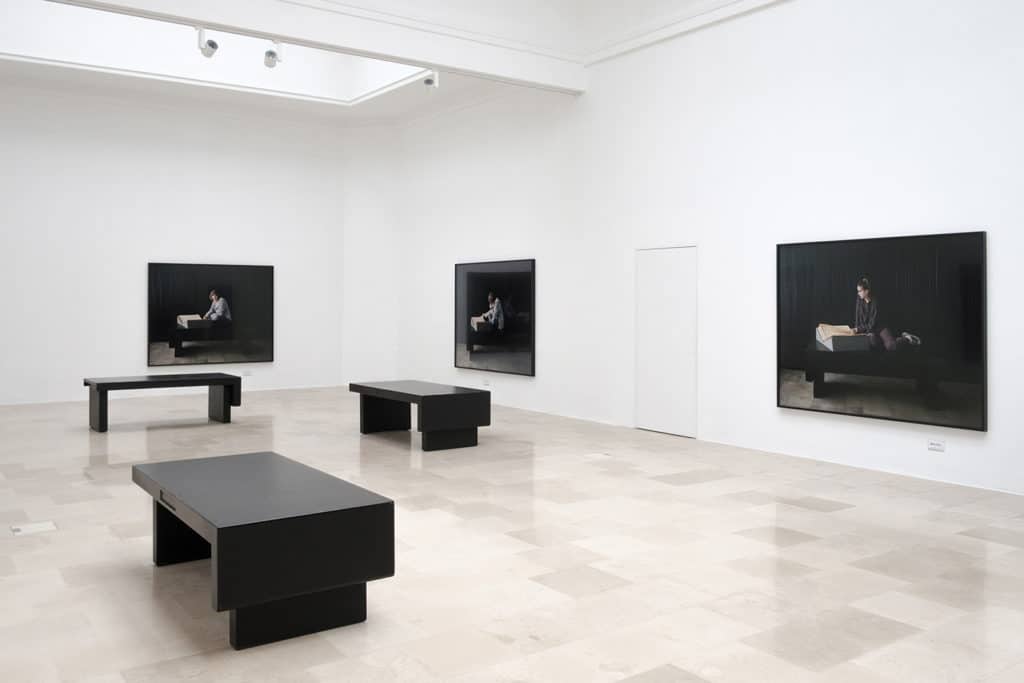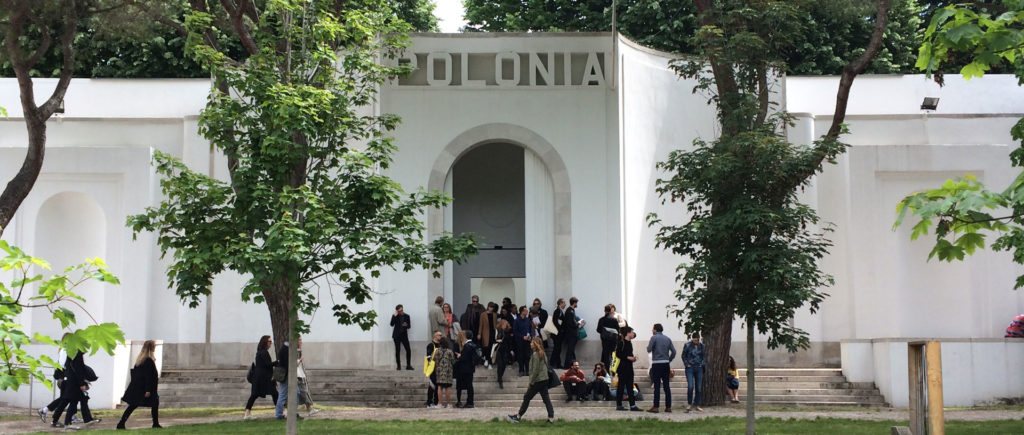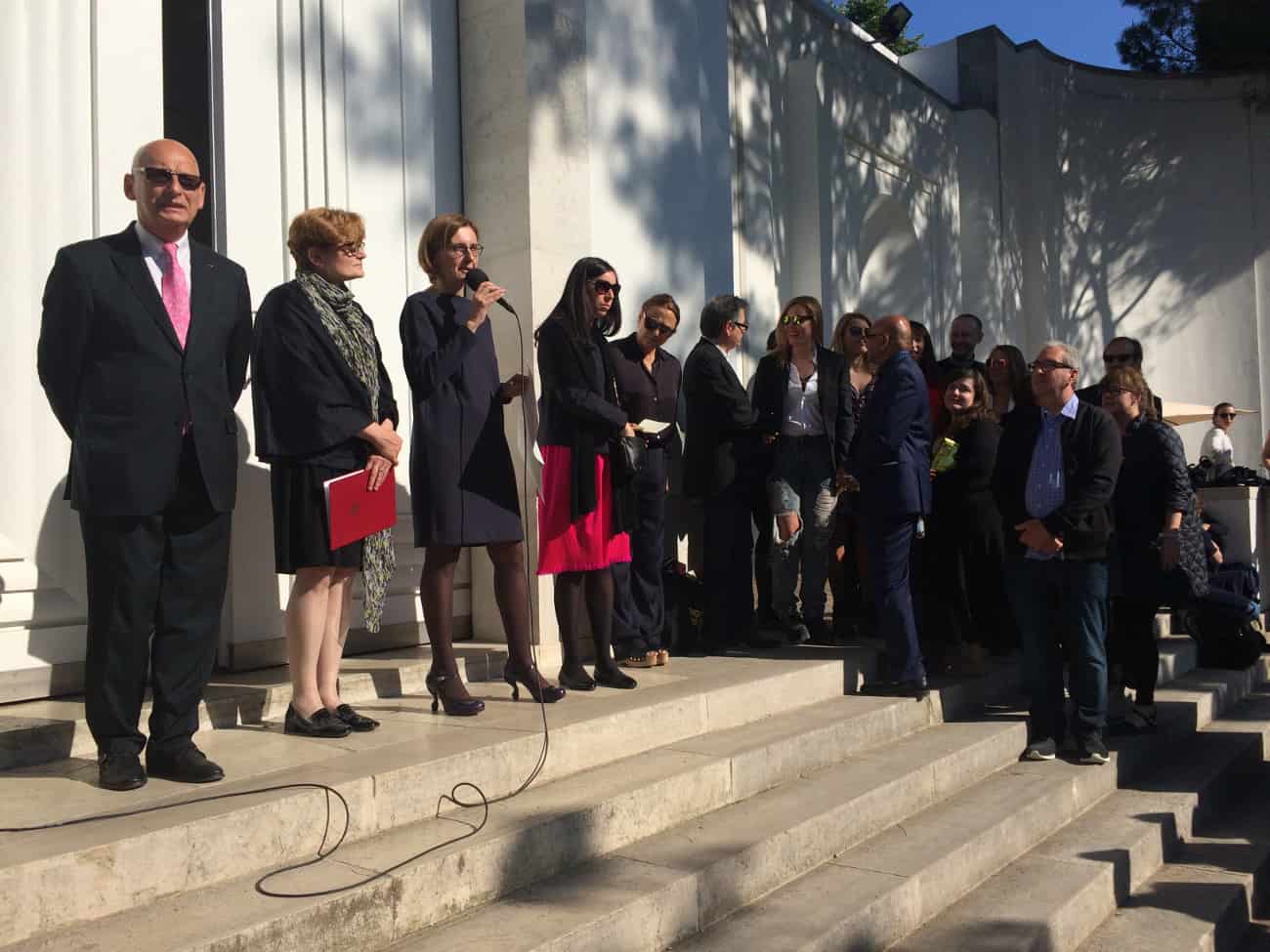Last year’s selection of Sharon Lockhart’s art project for the Polish Pavilion at the 57th Venice Biennale caused quite a stir in the art world. An American artist was to represent Poland at this sort of international art exhibition. Did a dire condition of contemporary art in Poland force jury members to seek quality art projects for the national pavilion outside the country’s borders?
Sharon Lockhart’s work of art in Venice is a multidimensional project that could be regarded in terms of a concept, with its execution and presentation held at the Polish Pavilion. The source of inspiration for the project was the legacy of Janusz Korczak, a Jewish writer and educator from Poland, who initiated ‘Mały Przegląd’ [Little Review]. The thin newspaper supplement to the Jewish magazine ‘Nasz Przegląd’ [Our Review] edited entirely for and by children was issued in 1926-1939. Lockhart’s work is the final effect of a series of meetings and workshops she held with the girls of the Youth Center for Socio-Therapy Rudzienko, a small town near Warsaw. It seems worth mentioning that the artist has created a number of closely related long-term art projects in collaboration with the center’s residents, which is testimony to her determination and devotion.
One could argue that exhibiting works of art by an American artist, who tackles the issues of the Jewish minority and alienated communities in Poland, is in fact a sure ticket to success. Lured by the prospect, an independent jury of art professionals appointed by the Minister (the exhibitions in the pavilion have been organized for years by Zachęta – National Gallery of Art) decided that Sharon Lockhart should represent Poland at the Venice Biennale. As it turns out, they misjudged the situation. Despite a compelling concept, Lockhart’s project pales in comparison with other works of art on display. Why is that?
The continuous art project with the girls from Rudzienko, Sharon Lockhart has worked on for many years (the preparation for Venice project took 4 months), required the input of multiple artists. Unfortunately, the viewer cannot infer this fact from the context of the exhibit that includes several large-scale photographs, each featuring a single girl from the youth center reading ‘Little Review.’ Additionally, a short film portrays pre-arranged gestures performed by those girls against a black background. They make automatic routine movements, awkwardly hit the keys and improvise on the piano, or jump upside-down in slow motion while punching the air with a small bat. Presumably, the film records the results of a workshop run by Lockhart.
The visitors of the Biennale also had the chance to browse through twenty-nine issues of ‘Little Review’ magazine selected by the girls from Rudzienko and translated into English for the first time. The weekly micro-magazine could be read on the spot or taken home by members of the audience. The issue I came across at the Polish Pavilion, which was originally published on April 13, 1928, contained many, often dramatic, stories by children. The inconspicuous yet ingenious magazine was the highlight of the main exhibition instead of a mere addition.
This tiny supplement to the daily newspaper issued by Jewish children in the interwar period provided them with a new valuable medium. For instance, the announcement of a film screening of ‘Uncle Tom’s Cabin’ at the Światowid cinema at the Marszałkowska Street in Warsaw was published right next to an essay by a young girl, who objected against the mistreatment and suffering of Jewish servants and asked the editor for help. ‘Little Review’ gave a voice to children and a platform for uncensored and unhinged self-expression. They repeatedly gave full vent to their feelings and conveyed their grief and sadness over their own predicament. Girls of the Youth Center for Socio-Therapy participated in acting, music, yoga and dance workshops run by Lockhart for similar purposes. A creative space gives you artistic freedom governed by different rules than those you usually follow in life. Those girls must have broadened their horizons, learned and reconsidered the values, the meaning of which has eluded them up to that point, because they found themselves in the wrong place at the wrong time and, as a result, landed in Rudzieno’s center.

Sharon Lockhart, ‘Little Review’ at Polish Pavilion, Venice Biennale, 2017. Courtesy: Polish Pavilion. Photo: Bartosz Gorka
The International Art Exhibition of La Biennale di Venezia and other similar events survey the state of contemporary art, its dominating subjects and motifs. To be fair, long-term collaborations, the educational and social aspects of the project, and Sharon Lockhart’s own deep involvement coincide perfectly with the narrative.
However, it is a site-specific presentation that is of paramount importance to the Biennale exhibition. A tangential creative process elevates a piece only after the work’s thorough examination by the viewer. An overwhelming event gives the artist little time for capturing people’s attention, surprising and drawing them in, so that they bother to take a break from a marathon round at the pavilions and delve into the underlying meaning of the work of art at hand, its political and social implications. Regrettably, the documentation, a small portion of Sharon Lockhart’s project exhibited at the Polish Pavilion, fails to do justice to the true nature of an intricate artistic creation. The outcome is ironically reminiscent of how ‘Little Review’ was added to a more prominent daily newspaper. The crown jewel of Polish contemporary art has lost its shine in Venice. What a shame, though, the project itself is certainly not without merit.
Written by Daga Ochendowska
Translated by Karolina Jasińska
Edited by Maggie Kuzan















